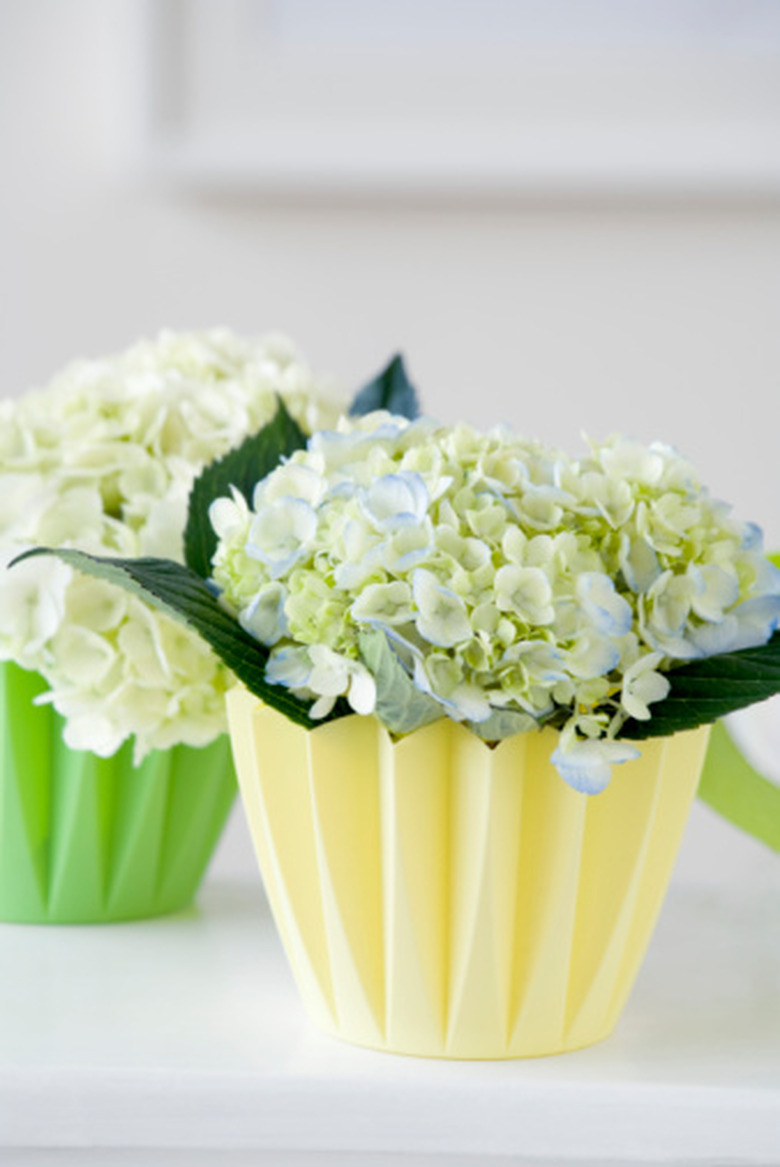Which Flower Absorbs Food Coloring Faster?
Flowers are naturally available in a rainbow of sizes, shapes and colors. For those looking to expand this color palette, a few drops of food coloring in the water will do the job. Transpiration, which pulls water up the stem to the petals, is the process that is responsible for this color change. The change is most effective when done with white flowers and warm water, and some flowers work better than others.
Carnations
Perhaps the most widely used for this purpose is the carnation (Dianthus caryophyllus). Carnations, used in the garden and in the cut-flower industry, are noted for their vast color selection, including white, yellow, shades of orange, red and purple, and may be solid or multicolored. The petals are among the best at absorbing color, and will stay fresh for several weeks when cut and kept in a vase. For the best coloring results, the vase should contain warm water and a few drops of food coloring. This color will last between two and three weeks, and will work on the standard one-bloom carnation of the spray carnation, with multiple small flowers.
- Flowers are naturally available in a rainbow of sizes, shapes and colors.
- This color will last between two and three weeks, and will work on the standard one-bloom carnation of the spray carnation, with multiple small flowers.
Daisy
As with carnations, daisies (Gerbera jamesonii) are also widely used. They are noted for their distinctive shape, created by several layers of petals that surround a dark center. The flowers naturally come in white or yellow, but hybridization has created hues of pink, purple, orange and red. Once cut from the plant, the flower will stay healthy for three to four weeks, and should be placed in a vase with warm water and food coloring. For best results, cut the stem at a bit of an angle.
Hydrangea
Hydrangea produces large clumps of flowers which are available in a wide selection of colors. Those colors include purple, pink, blue, green and white. When planted, the flowers are sometimes known to change colors naturally, a change which is often attributed to changes in soil pH. When cut and placed in a vase, the hydrangea will live for several weeks, and when food coloring is added, the color of the flower will change fairly quickly. There are a few varieties that work well, including the smooth hydrangea (Hydrangea arborescens "Annabelle"), a variety that produces clusters of large flowers, or the Pee Gee hydrangea (Hydrangea paniculata "Grandiflora"), which produces clusters with smaller flowers. Either type absorbs color well and stays vibrant for several weeks.
- As with carnations, daisies (Gerbera jamesonii) are also widely used.
- When planted, the flowers are sometimes known to change colors naturally, a change which is often attributed to changes in soil pH.
- When cut and placed in a vase, the hydrangea will live for several weeks, and when food coloring is added, the color of the flower will change fairly quickly.
Queen Anne's Lace
The Queen Anne's Lace (Daucus carota) was introduced to the United States from Europe and features clusters of flat-topped flowers. These small flowers are often used to add texture and filler to bouquets. The best color retention will happen with flowers that are grown commercially as opposed to those grown in the wild. These flowers will last just a few weeks in a vase — and the fresher the flower, the more color it will absorb.
